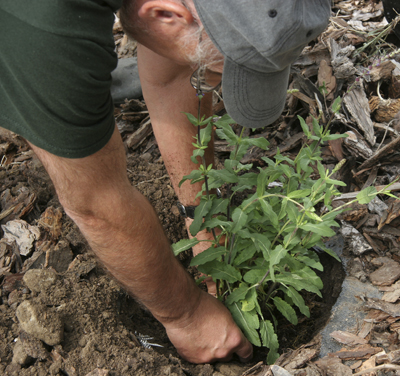
With temperatures dropping like the leaves, fall is the perfect time to get out and work on your yard and garden.
Transitioning your summer yard into the fall can be a great time to prepare for spring and enjoy the season.
Mulching
The leaves that fall onto your lawn during autumn can be put to better use than raking, bagging and setting them out
on the curb for the trash truck to collect. Shredding leaves with your lawn mower will give you free, shredded mulch for your flowerbeds. Mulching in the fall is equally
important as springtime mulching since it helps maintain moisture and soil temperatures while controlling weeds.
The BRA makes a selection of mulches and Tri-Gro compost available to the public at its Temple-Belton Regional Sewage System (TBRSS).
TBRSS’s popular Tri-Gro can be used screened as compost and unscreened as mulch. Mulches such as native wood, hardwood and Xylem are also available for purchase. Prices, availability and
loading hours can be obtained by calling TBRSS at (254) 939-6471.

Fall Planting
With cooler temperatures, soil doesn’t dry out as quickly as it does in the summer heat. Because of this, plants in your
landscape will require less water. New plantings will also have a greater chance to fully mature and establish stronger roots than those planted in the spring. The decrease
in pests and weeds during the fall also helps fall plantings become established.
Autumn is the perfect time to plant new trees and shrubbery. Your local nursery can help you choose suitable trees for your
area that are also a great investment for your home and environment. They can also help you choose the best place to plant your new tree. Strategically planted trees can help you
save energy and money by blocking cold winds in the winter and providing shade in the summer.
Flowerbed Maintenance
For those of us who have had garden trouble due to the drought this summer, fall is an ideal time to rejuvenate your affected
flowerbeds by composting, fertilizing and cultivating. Once they are revived they will be ready for you to plant fall annuals such as mums and pansies, which will bring fall color
and beauty to your flowerbeds.

Xeriscaping
If your drought-affected plants were a total loss this year, you may consider replacing them with drought-resistant plants.
Xeriscaping involves several principles such as planning a water-efficient garden and using native plants in your beds, as well as topics already covered such as mulching. Less
water and worry is needed with native plants as they are adapted to surviving Texas summers.
Fall Vegetables
Flowers, shrubs and trees aren’t the only plants that can flourish from fall plantings – fall vegetable gardens are quite popular in Texas.
Since fall days are shorter, the sugars in vegetables such as corn and beans often concentrate, leaving them with a better taste.
Storing Tools
Once your fall gardening is complete and you’ve weeded and mowed one last time, you can move on to properly storing your tools until
spring. Clean and sharpen your garden and mowing tools so they are ready to go in the spring. Also, don’t forget to unhook, drain and coil up your garden hoses. All of your work will pay
off as you get to enjoy a colorful and perhaps delicious garden through the cool autumn months.